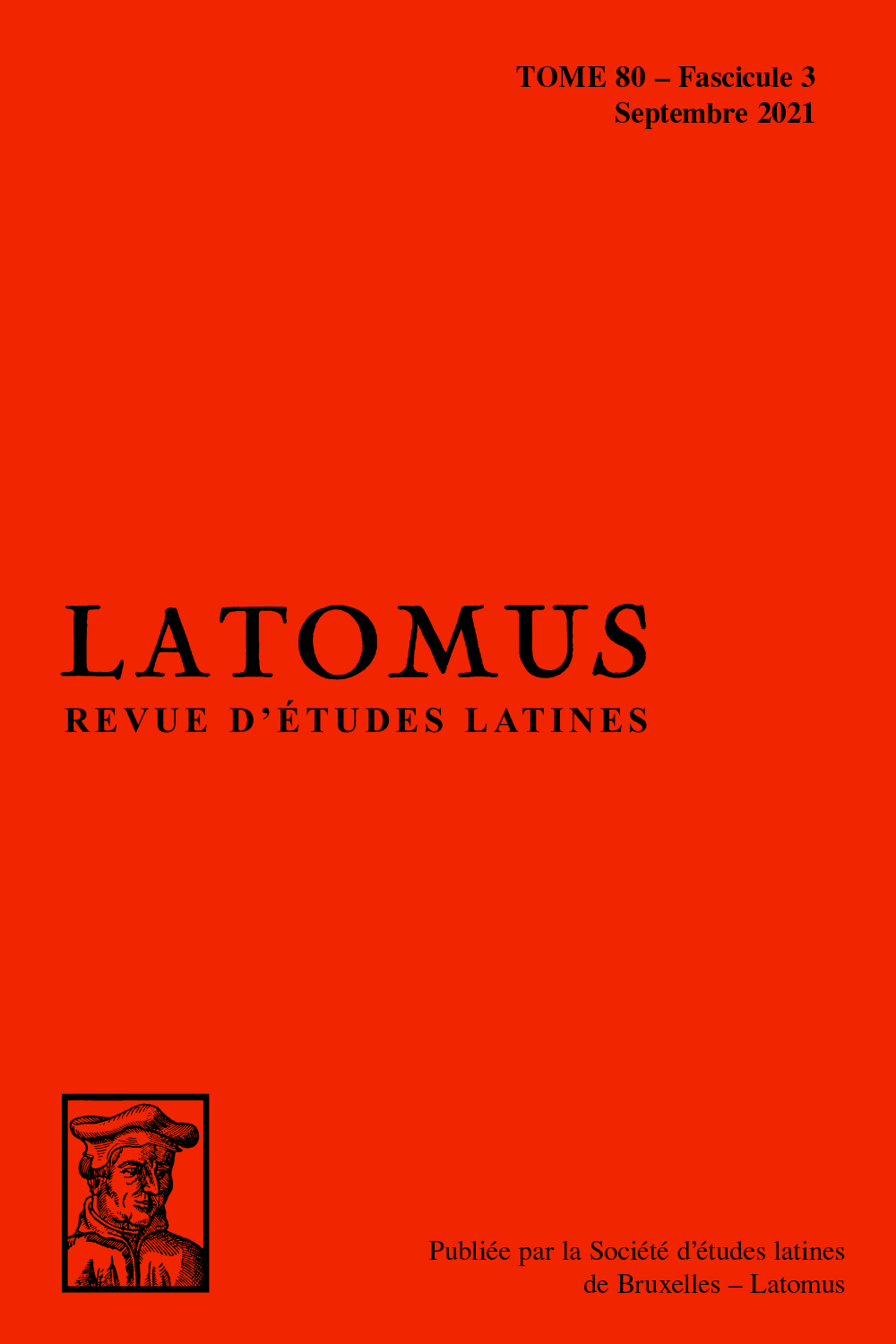 previous article in this issue previous article in this issue | next article in this issue  |

Preview first page |
Document Details : Title: Tra Virgilio e Ovidio Subtitle: Une lettura di Ov., Met. 13,627-630 Author(s): GAY, Marco Journal: Latomus Volume: 80 Issue: 4 Date: 2021 Pages: 812-824 DOI: 10.2143/LAT.80.4.3290314 Abstract : In the Metamorphoses, Ovid recounts Polydorus’ death in the passage Met. 13,429-438. Unlike Virgil’s, his version does not include Polydorus’ metamorphosis into a bush. Shortly after, relating the beginning of Aeneas’ journey from Troy to Italy (13,623 ff.), Ovid does not describe the encounter between Aeneas and Polydorus: despite several allusions to Virgil’s account of the Thracian stop, it is not clear whether the Trojans dock in Thrace and meet him (13,627-631). The location of Hecuba’s metamorphosis (13,569-570) and the comparison with Servius’ commentary on the Aeneid suggest that Ovid’s omission of the encounter between Aeneas and Polydorus aims to expose, among other things, the geographical ambiguity of Polydorus’ episode in Virgil’s Aeneid. Virgil situated the Trojans’ landing in the made-up Aeneadae (Aen. 3,18), which is different both from Aeneas’ traditional stopovers in Thrace (at Aenus or Aeneia) and from the location of Polydorus’ murder by Polymestor in the Thracian Chersonese. As often in his ‘little Aeneid’, Ovid’s attitude is that of a playful, learned literary critic. |
|


